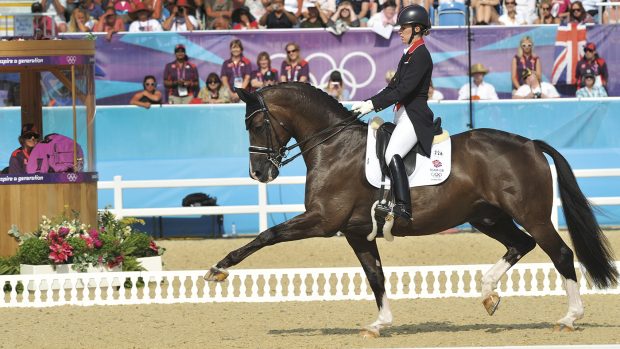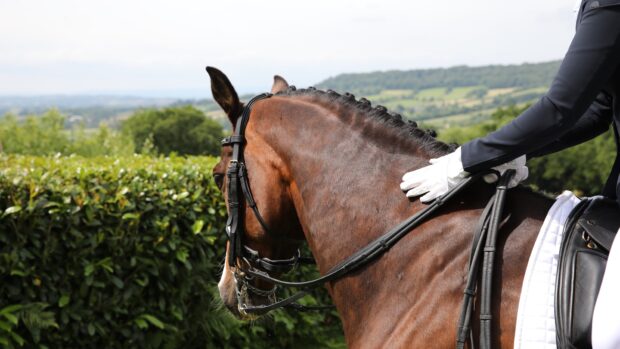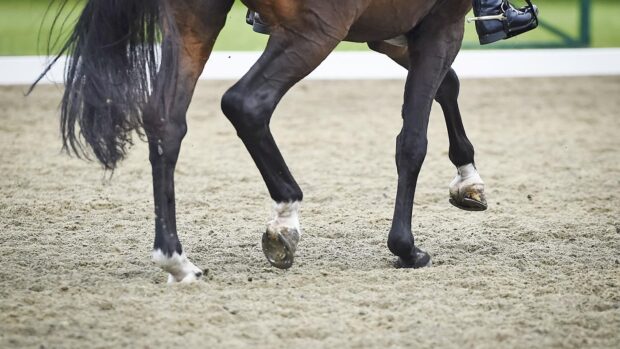Dressage needs more mass appeal — so says the FEI — but will shorter tests, or more modern clothing rules help?
The International Olympic Committee’s (IOC) 2020 Agenda aims to create “attractive, modern, TV — and spectator-friendly sports”, in order to create a “new generation of fans” (news, 7 May).
And, as part of that, equestrian sports must fall into line.
Eventing has had radical changes proposed to formats (news, 24 April), but dressage is looking at modernising the sport via technology, shorter grand prix tests and an updated dress code.
“We need more stories, drama and stars,” said Frank Kemperman of the FEI dressage committee.
“We need to keep the status quo, but we need a younger audience. We need to modernise the sport while keeping the core values.
“Dressage is a traditional sport, but we need to be ready to move forward. What would dressage be without the freestyle, and yet 25 years ago it was unheard of — you would have said I had rocks in my head if I’d told you the freestyle would be the final.”
Appealing to a broader audience
“It’s far more enjoyable watching a sport if you know what’s going on,” said Chris Hodson, president of Equestrian Sport New Zealand.
He added that all National Federations must use funds to help the audience understand — whether that be by technology or a simpler format.
Mr Kemperman said that the sport needs to allow the audience to be “creative and interactive”.
“Maybe this is via apps allowing the public to judge and compare their scores with the actual judges,” he said.
“Or perhaps use split screens. We need to use all possible technology to bring the idea home. It is our job to explain dressage; we have to sell our sport.”
Jason Brautigam from British Dressage agrees.
“We know that modern technology is important to get a younger generation interested,” he added.
A survey conducted in the autumn of 2014 by Repucom, which specialises in market research, media evaluation and commercial auditing, established that 86% are attracted to dressage by its beauty, the relationship between horse and rider, the horse itself, and the sport’s grace, elegance, aesthetics and fun, with only 24% interested because of concepts including discipline, control and training.
“We have to be open to innovation and learn how to make it better. There is a young public out there and we need them; they have iPhones and iPads and they follow everything ‘in the moment’ online — that’s their world, and we must be part of it,” added Mr Kemperman.
A shortened format?
Another proposal is to shorten the length of grand prix tests — however, this has provoked a backlash from riders.
“No TV channel is going to broadcast 10 hours of dressage,” said Mr Kemperman.
The idea of a shorter test could “remove some of the multiples” — i.e. piaffe, passage and extended trot only need to be performed once, rather than two or three times.
However, top Dutch rider Anky Van Grunsven urged against shortening tests.
“We need to increase excitement without changing the essence of the sport,” she said.
“Please, please don’t change the tests. I don’t see how anyone can do a good test in three minutes. Football is 90 minutes, tennis can go on for hours — six minutes is not a long time to watch a nice test.”
Wayne Channon of the International Dressage Riders Club agreed, saying that in a survey done by the organisation, only 6% of 3,234 answers valued a shorter test.
Jazzier clothing?
Could we soon see bright colours, shorter jackets or even more bling on the world stage?
The concept of an updated dress code has received a positive response.
“I’d like to change the dress code — as long as it’s just for spectators and not scored, otherwise that would just create another subjective problem,” said Anky.
Currently the hue saturation values laid down by the FEI needs to be between 0-32%.
“Don’t the restrictions on colour choices between our dressage hat and coat seem at odds with each other? You’re hard pushed to find a hat that isn’t shiny or blingy these days, but tailcoat rules restrict them to dull tones,” said Richard Davison in his guest-edited issue of H&H (22 March).
“Showjumpers are using more modern materials which allow full flexibility, and in a far broader range of colours. This can boost a team’s pride and identity or provide an insight into an individual rider’s personality, which is intriguing to both media and spectators.”
A British Dressage rules meeting on 12 March concluded that the stringent jacket rules should change and will be relaxed to allow more colours in the annual 1 December rules update.
The dress code would also help move the sport forward.
“I think the combination of modern helmet and old fashioned tailcoat is strange,” added Mr Kemperman.
“Safety is more important than tradition; there should be the chance to wear a short jacket if people want. A more relaxed attitude would be good for dressage and personal choice should be allowed.”




